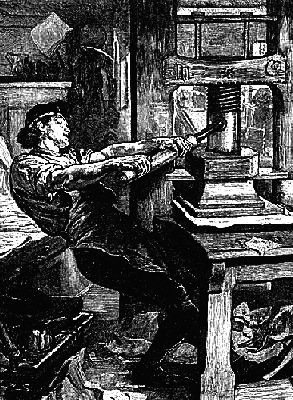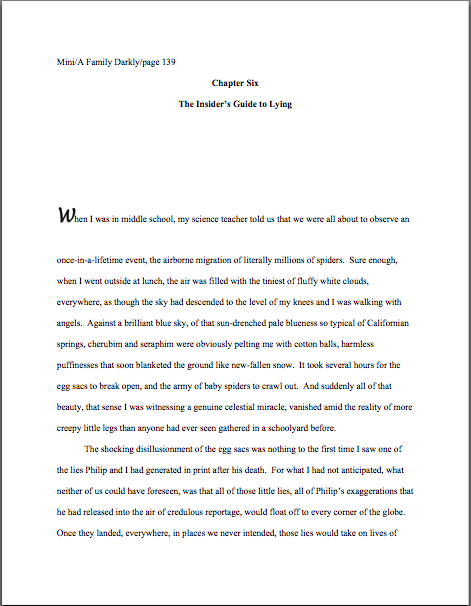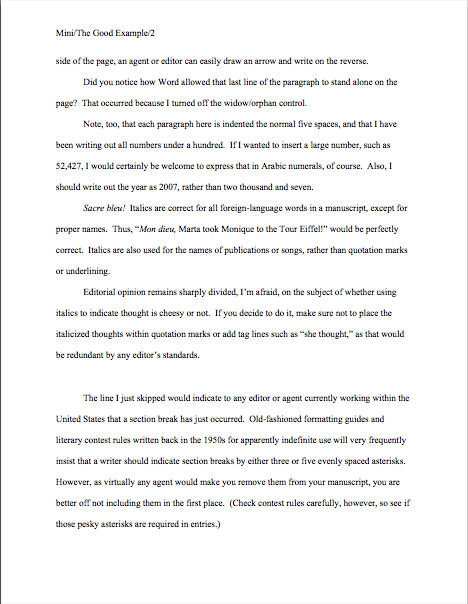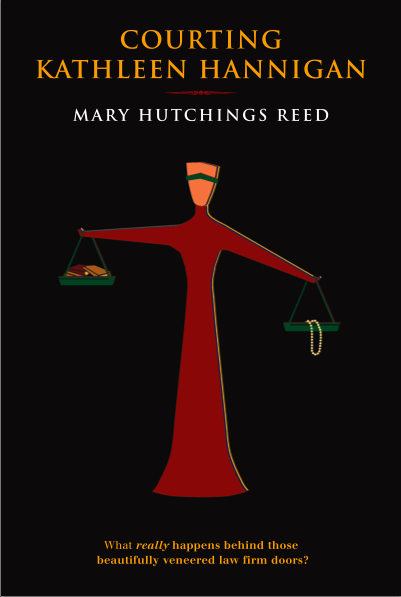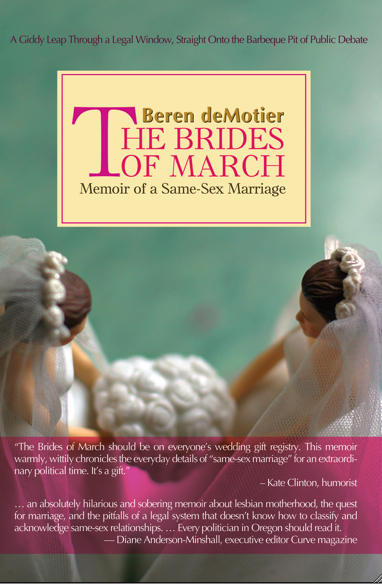
This, believe it or not, is a photo of something exceedingly straightforward: a wind-blown stand of trees alongside a rural road in Oregon, shot as I was driving by at sunset. Unfortunately — or fortunately, depending upon how one chooses to look at it — my camera has an annoyingly stubborn propensity to assume, contrary to all empirical input, not only that any object I might choose to photograph is going to be stationary, but that I am as well.
News flash, camera: I move occasionally. So do objects in the material world.
(And I don’t appreciate how judgmental you’ve become lately, camera. Yes, I am a writer, and like so many of my breed, may generally be found in front of my computer, day and night. It’s my natural habitat, but I’m not a mushroom. I’ve been known to uproot myself and walk around. Look, I’ve just wiggled my toes. But did you bestir yourself to capture it? Not a chance.)
To give the camera creative credit, sometimes the clash of logically-exclusive presuppositions can lead to unexpectedly interesting results. Since both the trees and I were moving, the camera elected to move from the realm of realism, its usual forte, to impressionism.
Keep this heavy-handed (and tree-filled) metaphor in mind as you read merrily through today’s post, please: clinging too rigidly to preconceived notions of how things are supposed to work may lead to a distorted view of what’s actually going on. So can taking a brief preliminary peek at a process in motion and assuming that momentary snapshot is in fact representative of the whole.
I assure you, forests in Oregon don’t really look like that. My camera’s opinion notwithstanding.
That observation should feel at least a trifle familiar by now: throughout this series, we have seen a number of ways in which the prevailing wisdom about how books get published is, to put it charitably, a tad outdated, if not outright wrong. Contrary to popular opinion, sheer speed of landing an agent or garnering a publishing contract is not a particularly reliable indicator of how good a manuscript is, presenting a manuscript or book proposal professionally does make a difference in how agency screeners respond to it, and advances, particularly for first books, are seldom so large that the writer can afford to quit her day job and live on it, unless she happens to have an unusually developed capacity for deriving nutrition from the air she breathes. If it was ever true that the instant a brilliant writer wrote THE END, agents and editors magically appeared on her doorstep, clamoring to represent and publish, respectively, the just-finished book, well, let’s just say that it hasn’t happened recently.
To be precise, since the days when Cinderella’s fairy godmother was still making regular house calls. If you catch my drift.
At least, it doesn’t work that way for writers who weren’t already celebrities in another medium. If you happen to have won the Nobel Prize in economics, spent your formative years starring in movies, or are the recently-deposed dictator of some interesting small country, I’m afraid that different rules apply; you’re going to need to find guidance somewhere else.
For the rest of us, getting our writing recognized as marketable by those in a position to do something practical about it — like, say, an agent with connections to editors who regularly handle your book category — is darned hard work. And, as I pointed out earlier in this series, all of that nerve-wracking labor and waiting doesn’t stop once one lands an agent to represent one’s manuscript. What the work entails may change, but the imperative to produce one’s best writing, presented in the best possible manner, never goes away.
It’s part of the job description of the professional writer. (Sorry to be the one to break that to you. But if I don’t, who will? Last I heard, the fairy godmothers’ guild was still on strike. Must have been all of those house calls. )
But that does not necessarily mean that someone else will be calling the shots.
Which brings be back, thank goodness, to the matter at hand. Last time, I touched upon several reasons that an aspiring writer might decide to bypass the traditional agent-to-major-publisher route to publication in favor of other options such as approaching a small publisher directly or self-publishing. A writer might conclude that his life was too short to spend querying every agent in the last three years’ editions of the Guide to Literary Agents, for instance; rather than shooting for the big publishing contract, he might be thrilled to see his book in print, even sans advance, through an indie press.
Or, to borrow the rather more poetic rendering of the late, great Hilaire Belloc: When I am dead, I hope it may be said, “His sins were scarlet, but his books were read.”
Strategic reasons might weigh into the decision to go indie as well. A writer might feel, for example, that a regional press would be a better bet for her book on migratory waterfowl of the Mississippi delta. (There must be some, right?)
Or the writer might just find the prospect of an agent’s having the right — nay, the obligation — to dictate changes in his manuscript, changes that may well be countermanded by the editor who acquires the book. Even that’s not necessarily the end of the revision road: since editors come and go with dizzying frequency at the major houses these days, the editor who acquires the book may not be the editor in charge of the project when it’s time for the writer to deliver the manuscript, or when she’s finished making the changes requested in the initial editorial memo. Or in the days before the book goes to print.
Yes, it’s been known to happen. So have requested revisions — sacre bleu! — after the review copies have gone out to the advance reviewers (i.e., the one that review books before distributors get them, such as Kirkus, Library Journal, and Publishers Weekly). If those reviews are dismal enough, editors have been known to get a mite nervous, and the editorial memos start flying.
The moral: what a writer regards as a finished book — which is how most aspiring writers think of their books prior to submission, right? — often isn’t. In the traditional publishing world, a whole lot of people have the right to request changes, right up to the point that the spine is about to be pressed against the pages. And sometimes even after.
If I haven’t already hammered this particular point home throughout this series, let me do it now — and since it’s a truth that long-time readers of this blog should find familiar, feel free to open up your hymnals and sing along: in the eyes of the publishing industry, no manuscript is beyond revision until it is actually sitting on a shelf in Barnes & Noble.
Some writers find this rather trying, as you might imagine. Being a writer, Lawrence Kasden wrote, is like having homework every night for the rest of your life.
I am hardly the first to point out that art and the business of promoting it have not invariably been on the friendliest of terms, historically speaking. One of the perennial frustrations of the aspiring writer’s life is the paradoxical necessity of bringing one’s submissions into conformity with what an unknown agent (or agency screener, editor, editorial assistant, contest judge, etc.) expects to see on the page without unduly compromising one’s authorial voice and artistic vision.
Last time, I brought up an increasingly attractive way out of this dilemma: self-publishing.
Don’t roll your eyes, those of you dead-set on traditional publishing — it’s an increasingly attractive option, especially for nonfiction. These days, you can hardly throw a piece of bread at a respectable-sized writing conference without hitting an aspiring writer who, exasperated by the ever-increasing difficulty of breaking into the world of the major houses, are at least toying with striking out on his own.
Self-publishing has come a long way in the last few years. The rise of print-on-demand (POD) and Internet-based booksellers’ increasing openness to featuring POD books has rendered the self-publishing route a viable option for those who balk at the — let’s face facts here — often glacial pace of bringing a book to publication via the usual means, working with the usual suspects.
Yet if you wander into a writers’ conference and ask representatives of the traditional publishing houses about self-publishing, you’re likely to receive a dismissive, if not overly scornful, answer. Often, agents and editors will act as though self-publishing was purely an act of vanity reserved for those who couldn’t hack it in the big time– unless, of course, the book about which you are inquiring happened to sell exceptionally well and ultimately got picked up by a major publisher as a result.
Which does indeed happen — not often, but from time to time.
In case you were wondering, exceptionally well in this context usually translates into something over 10,000 books, give or take a hundred or two depending upon book category. That’s not only good ECQLC (Eye-Catching Query Letter Candy, for those of you new to the Author! Author! community); that’s a statistic that an agent can carry to an editor at a publishing house as evidence that there’s already a demonstrated readership eager for your next book.
Those are the exceptions, though. The last time I checked, the average self-published book was selling less than 500 copies.
Yes, even the ones posted on Amazon. Just as the mere fact of throwing up a website doesn’t automatically result in the world’s beating a path to one’s virtual door, having a book available for sale online doesn’t necessarily translate into sales. The web is, after all, search-oriented: if a potential reader doesn’t know that a particular book exists, s/he’s unlikely to be Googling it, right?
Someone needs to give that reader a heads-up. Increasingly, that someone is the author.
The many, many obstacles facing the self-published book
There’s a reason for the comparatively low sales statistics, of course: self-publishing generally means that the author is solely responsible for promoting his own book — and placing it in bookstores. At a traditional publishing house, large or small, while authors are increasingly expected to invest their own time and resources in hawking their writing (it’s fairly common now for an author to be responsible for setting up her own website, for instance, and to handle virtually all web promotion), but the publisher will handle getting the book to distributors and book buyers.
A self-published book, on the other hand, almost always has a promotional staff of one: the author.
In practice, this can make self-publishing a pretty hard row to hoe, unless the author happens already to have her pretty mitts on some hefty promotional credentials, a mailing list of thousands, or connections at bookstores nationwide that would make the late Jacqueline Susann weep with envy. (Any writer seriously considering self-publishing, or even promoting her own book, should run, not walk, to rent the uneven but often very funny Susann biopic, Isn’t She Great?. It has some problems on a storytelling level, as real people’s lives often do, but there’s no denying that it’s a great primer on how to promote a book, based upon the undisputed mistress of the art. Seriously, she would stop in every bookstore she passed, sign every copy of her books they had, and send individual thank-you notes to everyone who worked in the bookstore afterward. The lady worked for her sales.)
Also, as I mentioned yesterday, self-published works (as well as POD books) currently face some pretty formidable structural obstacles in a literary world that is still very much oriented toward traditional publishing. Most US newspapers and magazines won’t even consider reviewing a self-published or POD book, for instance; even the standard advance review sources won’t do it.
So there goes the standard source for free publicity. But what about distribution?
In practice, anti-review policies mean it’s harder to convince a library or bookstore to carry a non-traditionally published book. And since fiction is traditionally more review-dependent than nonfiction — it all depends on the writing, right? — almost anyone in the traditional book selling or buying biz will tell you that self-publishing a novel is just a poor idea. (Which isn’t necessarily true anymore — as tomorrow’s guest blogger will be here to attest. But shh; I’m not letting that particular cat out of the bag just yet.)
Then, too, since bookstores must purchase self-published and POD books up front, they don’t have the option to return them to the publisher if they don’t sell. As a result, it can be substantially more expensive for a bookstore to carry them than books from a traditional publisher. So both big chains and small indie stores tend to shy away from self-published books; the author tends to have to talk his book into some shelf space, venue by venue.
And then there’s the conceptual barrier
As if all that didn’t present an intimidating enough obstacle course for the self-published writer, there’s also quite a bit of lingering prejudice against self-published work — an attitude still strong enough in literary circles that an author’s already having brought out even a comparatively successful self-published book will not necessarily impress an old-school agent or an editor.
Yes, really. Despite some notable recent successes, reviewers, librarians, agents, and editors still remain, at least overtly, relatively indifferent to the achievements of self-published books, to the extent that not all of them even make the decades-old distinction between so-called vanity presses (who print short runs of books, often at inflated prices, solely at the author’s expense, so the author may distribute them), subsidy presses (who ask authors to contribute some portion of the printing expenses; the press often handles distribution and promotion), desktop publishing (where the author handles the whole shebang herself), and print-on-demand (which refers to how the books are actually produced, rather than who is footing the bill to produce them).
Why would any reasonable human being lump all of those quite disparate categories together, you ask? Well, practical reasons, mostly: as I mentioned above, the average self-published book does not sell awfully well, so the whole species tends to be dismissed by those who sell books for a living as irrelevant to the book market as a whole.
Interestingly, the prevailing opinion on this point hasn’t changed all that much over the last decade or so, despite the fact that many POD and self-published works have proved quite profitable. Remember what I said above about rigid assumptions sometimes leading those who cling to them to misapprehend reality?
The other reason is philosophical: they just don’t think self-published books are inherently as good as those produced by traditional publishers. If the book in question were genuinely of publishable quality, they reason, why didn’t an agent pick it up? Why didn’t a mainstream publisher bring it out?
Yes, what you just thought is absolutely correct: this logic is indeed circular. However, that doesn’t mean the argument doesn’t have any merit — we’ve all seen dreadful self-published books that have only too obviously never passed under the eyes of a reasonably competent proofreader, let alone editor. — or that the publishing industry and those who feed it for a living are simply hostile to any book they didn’t handle themselves.
Like so much of reality, it’s substantially more complicated than it appears at first glance.
So what precisely do they have against self-publishing, other than that it’s not what they do?
In essence, the underlying objection here is that for a book to be self-published, only its writer has to consider it of publishable quality — which is to say, it has inherently violated the rules by which traditional publishing operates. Breaking into print via single person’s say-so is, as we have seen throughout this series, a far, far cry from how mainstream publishing works. Traditionally published books must jump through a rigorous series of hoops before hitting print, hurdles intended (at least ostensibly) to sift out the manuscripts that are not yet up to professional standard by passing them through an increasingly fine set of mesh screens, as it were.
A trifle startling to think of it that way, isn’t it? To try to understand the traditional publishing industry’s view of self-publishing, let’s take a gander at why they might consider it their selection process akin to panning for gold:
The querying stage: agencies evaluate hundreds of thousands of queries and verbal pitches in order to weed out book projects that don’t fit easily into an established book category (if you don’t know what that is, I implore you to peruse the BOOK CATEGORIES posts on the archive list at right without delay), concepts that have been done too many times (every bestseller spawns thousands of copycats), premises that are unlikely to sell well in the current literary market (which changes all the time), and works by writers that cannot write clearly (I’m sure that all of my readers are sending off gems, but you’d be amazed at how many query letters border on the incoherent).
Based upon these assessments — and other criteria, of course, but we’re thinking in generalities for the moment — the agent (and her Millicents) select a small fraction of the queried or pitched projects to read in manuscript form. In theory, then, any book project that makes it past this stage is considered to be conceptually acceptable and in accordance with professional querying standards.
The agency submission stage: Millicent and her boss agent remove from the pool of possible manuscripts that exhibit grammatical errors, spelling mistakes, formatting problems, storytelling difficulties, pacing angst, a not-very-compelling voice, and a whole host of composition problems. Not to mention those that just don’t grab the agent’s interest or he doesn’t think he can sell in the current market.
By this point, the initially immense applicant pool has been narrowed down to just a few thousand of any year’s queriers — or, depending upon book category, possibly a few hundred. Ostensibly, the manuscripts that make it past this stage are all professionally formatted, grammatically impeccable, are written in a voice and style appropriate to the chosen book category, and are stories well told and/or arguments well made.
Yes, yes, there are other criteria at play, too. Keep picturing those sieves and prospectors panning for gold.
The editorial submission stage: agents take manuscripts and book proposals to editors (and their assistants, known here at Author! Author! as Maury, Millicent’s cousin; their aunt Mehitabel is a veteran contest judge) who assess the submissions for voice, content, and pacing appropriateness for the audience the imprint or press is already targeting (like agents and editors, imprints within major publishing houses specialize, right?), potential marketing pluses and minuses, cost of publishing (one of the primary reasons too-long manuscripts have a hard time making the cut), and what the publishing house’s powers that be believe readers will want to buy a year or two hence.
The miniscule fraction of the original querying pool that clear the hurdles of this stage AND impress an editor more than books by already-established authors (whose books always make up the overwhelming majority of releases in any given year) will then move on to the editorial committee. Every book that makes it to this stage should be of publishable quality by professional standards; in theory, the selections from here on are amongst the best the current aspiring writers’ market has to offer right now.
The decision-making stage: editors pitch the books they have selected of an editorial committee and/or higher-ups at the publishing house who will make the ultimate decision about which books to publish, possibly after consultation with the good folks in the production, marketing, and legal departments. By now, the original querying pool has usually been narrowed so much that the group of accepted first-time authors in a given year could fit quite comfortably into a good-sized movie theatre.
Contrast all of this to the process of self-publishing a book, as an agent or editor might conceive it:
Step 1: write book.
Step 2: pay publisher.
Step 3: receive a stack of books with one’s name on the cover.
Of course, there’s far, far more to it than that, but you can see their point, right? Unless a self-published book really wows the market, the streamlined road to publication itself more or less guarantees that the mere fact that it is in print is not going to impress those who work in traditional publishing.
Again, sorry to be the one to report that, aspiring self-publishers. But wouldn’t you rather know the pros and cons up front, rather than finding out about them after you have already invested in bringing out your book yourself?
Criminy.
Yes, yes, I know: I could feel many of you slowly going pale throughout that last part. I’m sorry to sadden anybody, but if we’re going to understand the odds that render self-publishing attractive to many aspiring writer, it’s vital to bear in mind that in traditional publishing, it’s rare that the annual percentage of releases by first-time authors exceeds 4% of the books sold in the United States.
That statistic, by the way, is from before the recent economic downturn.
Try not to let that depress you into a stupor. Instead, take a deep breath and remember what we learned earlier in the series: draconian winnowing-down techniques are not the result of agencies and publishing houses being inherently hostile to promoting new voices, but the flat necessity of narrowing down the avalanche of book projects to the relatively few that publishers, even behemoth ones, can actually publish in a given year.
When you’ve recovered sufficiently from the shock, I would invite you to consider two possibilities that fly in the face of some of the prevailing wisdom floating around out there. Time to squint our eyes and try to pick out some trees.
First, in the unlikely event that none of you out there has noticed, it’s been getting harder and harder for a new writer to land an agent, much less get a first book published. The hurdles a first book (particularly a first novel) must clear are high and numerous enough that at least considering self-publishing is a fairly rational response to a difficult situation, if one happens to have the resources to pull it off.
Second — and this one is going to challenge some of the prevailing notions floating around the writers’ conference circuit — those who work in traditional publishing honestly do have legitimate reason to regard their acquisition process as literarily rigorous. Yet as recent literary history has shown, that does not necessarily mean that self-published books are invariably less polished than their traditionally-published counterparts.
Which is to say: just because traditional publishing types sneer at self-publishing doesn’t mean that it might not be the right route for your book. Believe me, if you have the gumption, push, and creativity to sell enough copies, they might actually be more impressed than if you’d sold the same number via a traditional publisher.
And then there’s the control
Many self-published authors report that they’re quite happy that they grabbed the proverbial bull by the horns and released their books themselves. Nowhere in the publishing world can a writer enjoy such complete control over what will and will not appear on the page; as most first-time authors working with traditional publishers can tell you to their cost, marketing departments change book titles all the time, and while authors sometimes have consultation rights over their book’s covers, it’s rare that they enjoy much actual input into the finished image.
By contrast, such decisions lie entirely in the hands of the self-publishing author. (Go ahead, take a moment to bask in the glow of that mental image. It’s a pretty one.)
While many presses that cater to self-publishers do offer design services (at a price, of course), the final call is the author’s. If a writer was absolutely married to a particular typeface — something that would be utterly beyond his control at a traditional publisher, right? — it’s his for the asking. DItto with the cover art, or the title.
Heck, if he wanted to have each character’s dialogue appear in a different font, while a press might try to talk him out of it, it would be up to him.
But how might an interested writer get started?
As always, tread with care in pursuit of your dreams. This is yet another area of publishing where it genuinely pays to do your homework.
As with any other aspect of publishing, it really does behoove a writer to think very seriously about what she wants out of the publishing process, which type of publication is most likely to meet those expectations, and to do her homework very thoroughly before committing to any route to publication. Never having self-published anything myself, I don’t pretend to be an expert, but I have collected advice from a number of happily self-published authors under the SELF-PUBLISHING category on the archive list at right. These posts do not constitute an exhaustive how-to by any means, but they will give you some tips on what to expect, how to get started, and ways to avoid getting burned.
Remember, not all presses are equally reputable, and the range of charges can vary wildly. While there are many presses that work very well with writers for a reasonable per-copy price, there are also many that operate on the assumption that self-published books should be glossy, high-cost personal calling cards. So even if you don’t have your heart set on leather binding, you’re going to want to inspect very carefully what you’ll be getting for your money.
Ask lots of questions. Not only of any press that you’re considering entrusting with your work, but of successfully self-published authors as well. Don’t be shy — trust me, if you’re willing to show up for a book reading she’s set up at great trouble, she’ll be more than happy to tell you all about her experience with her press.
But please, be kind: if you ask her for advice, buy a copy of her book. She’s probably hand-selling each one.
As a first step toward learning more about self-publishing — and as a reward for your virtue in sticking with this series to close to the bitter end — I’ve recruited a successful self-published author, the erudite and charming James Brush, to give us the low-down on what he wishes he had known before plunging into the wonderful world of doing it for himself. I’ve taken an advance peek at his guest post, and trust me, each and every one of you who has ever given a passing thought to self-financing a book is going to want to see what he has to say.
So don’t forget to tune in this weekend — same Author! Author! time, same Author! Author! channel.
I’ll be wrapping up this series next week, you’ll probably be delighted to hear, and then be moving on to that topic most vital to submitters, how to format a manuscript. Yes, it’s not a very sexy topic, but as long as I have the energy to blog, not a single one of my readers is going to get her submission rejected because she didn’t know how professional authors present their work to agents.
Besides, after all the forest-gazing of recent weeks, I thought it might be rather refreshing to zero in on some individual trees. Keep up the good work!

